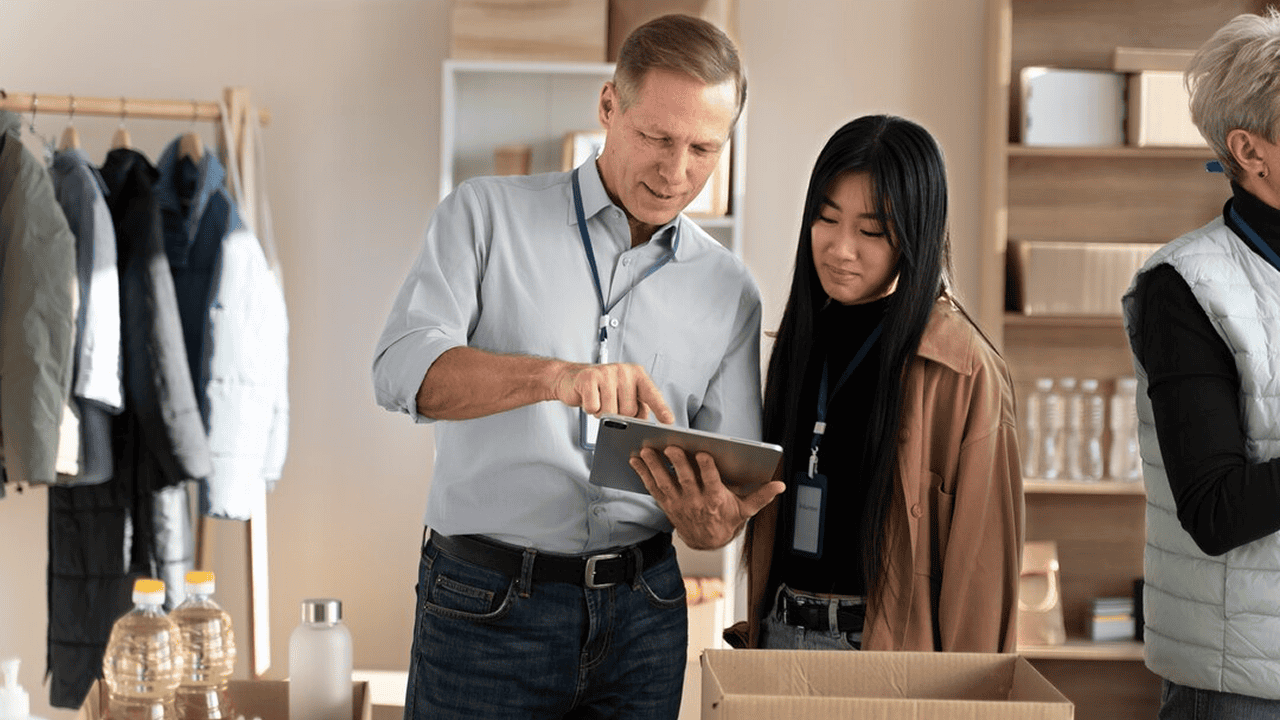
How Technology Is Changing the Way We Shop: A Look at the Future of Retail
Introduction
Technology has changed almost every part of our daily lives — from how we talk with friends to how we work. One area that’s seen big changes is shopping. In today’s fast-moving world, technology is shaping the future of retail. Whether we shop online or visit a physical store, new tools and systems are making the shopping experience faster, easier, and more personal.
In this blog, we’ll explore how technology is transforming retail. We’ll cover things like online shopping, artificial intelligence (AI), mobile apps, smart stores, and what the future might look like. Don’t worry — we’ll use simple English and easy examples so anyone can understand.
1. The Rise of Online Shopping
Online shopping is one of the biggest changes in retail over the last 20 years. People used to go to stores to buy things. Now, they can shop from their phones or computers at any time, from anywhere.
Why people love online shopping:
- Convenience: You don’t have to leave home.
- More choices: You can browse thousands of products from many brands.
- Better prices: Online stores often have sales or discounts.
- Home delivery: Items come straight to your door.
Companies like Amazon, Walmart, and Alibaba have made online shopping very popular. Today, even small businesses sell online through websites or platforms like Shopify and Etsy.
2. Mobile Apps Are the New Shopping Mall
Mobile apps make online shopping even easier. Instead of going to a website, people can use apps on their phones to buy products, compare prices, and read reviews.
How mobile apps help:
- Fast checkout: Many apps save your payment info for one-click purchases.
- Push notifications: Get alerts about deals or new products.
- Loyalty programs: Earn points or rewards when you shop.
- In-store help: Some apps work with physical stores to show maps, find products, or check prices.
Retailers now focus on building user-friendly apps. If the app is slow or confusing, customers may leave and go elsewhere.
3. Artificial Intelligence (AI) Makes Shopping Smarter
AI is changing how businesses understand and serve customers. It helps retailers learn what people like, suggest products, and manage their inventory.
AI in action:
- Personalized recommendations: AI looks at your past shopping to suggest what you might like next.
- Chatbots: These are AI assistants that answer questions, help you find items, or track your order — any time of the day.
- Fraud detection: AI helps catch fake transactions and keeps payments safe.
- Demand prediction: Stores use AI to guess what products people will want, helping them stock the right items.
Thanks to AI, shopping feels more personal — like having your own assistant.
4. Augmented Reality (AR) and Virtual Reality (VR)
Ever wished you could try on clothes or see furniture in your room before buying? That’s now possible with AR and VR.
What’s the difference?
- AR (Augmented Reality): Adds digital items into the real world using your phone camera. Example: Point your phone at your living room to see how a new sofa would look.
- VR (Virtual Reality): Creates a fully digital world. You wear a headset and explore a virtual store.
Popular uses:
- Makeup brands let you “try on” lipstick using your phone.
- Furniture stores like IKEA show how products fit in your space.
- Clothing brands offer virtual fitting rooms.
This tech builds trust and reduces returns since customers know what to expect.
5. Cashless and Contactless Payments
Today, people use fewer coins and bills. Instead, they pay with cards, phones, or even smartwatches.
Types of cashless payments:
- Credit/debit cards
- Mobile wallets (Apple Pay, Google Pay, Samsung Pay)
- QR code scanning (used widely in Asia)
- Buy Now, Pay Later (BNPL)
Benefits:
- Faster checkout: No need to count change.
- Safer: Less touching of money and machines, especially during COVID.
- Easy to track: Apps show your spending history.
Retailers are adding more ways to pay so customers can choose what’s best for them.
6. Smart Stores: The Future of Physical Retail
Physical stores are not going away, but they are changing. New tech is making stores “smarter.”
Smart store features:
- Digital price tags: Prices can change automatically based on demand or sales.
- Self-checkout: Scan and pay without a cashier.
- Smart shelves: Sensors show when stock is low.
- Facial recognition: Some stores in China use this to speed up payments.
Example: Amazon Go stores
Customers walk in, take items, and walk out. Cameras and sensors track what they take, and the bill is sent to their phone. No lines, no checkout.
7. Social Media Shopping
Apps like Instagram, Facebook, TikTok, and Pinterest are more than just for fun — they’re now major shopping platforms.
How it works:
- See a post or video with a product.
- Tap to learn more or buy without leaving the app.
Why it’s popular:
- Influencers show how products work.
- It’s easy to discover new brands.
- Shopping feels like entertainment.
Social shopping is growing fast, especially among younger people who spend lots of time on social media.
8. Voice Shopping with Smart Assistants
“Alexa, order more paper towels.” That’s voice shopping.
Smart speakers like Amazon Echo and Google Nest let people buy things using their voice. They can also:
- Add items to a shopping list
- Check if a store is open
- Track deliveries
It’s not super popular yet, but it’s growing, especially for repeat purchases like groceries or cleaning supplies.
9. Data and Customer Experience
Retailers use data to learn what customers like and how to serve them better.
Data helps:
- Track what products are popular
- See what times people shop
- Understand what ads work best
- Create better in-store layouts
When used correctly, data creates a smoother shopping experience. But companies must also respect privacy and protect customer information.
10. Drones and Robots in Retail
Some companies are testing delivery drones and robots to move packages faster.
Examples:
- Amazon Prime Air is working on drone deliveries.
- Walmart is testing driverless trucks.
- Some stores use robots to clean floors or restock shelves.
This tech is still new but could become normal in a few years, making deliveries faster and cheaper.
11. Green Technology in Retail
As people care more about the planet, retailers are using eco-friendly tech.
Green retail examples:
- Solar-powered stores
- Digital receipts instead of paper
- Smart lighting and cooling systems
- Sustainable packaging and shipping
Tech is helping companies reduce waste, save energy, and be more planet-friendly.
12. Cybersecurity: Keeping Shopping Safe
As shopping goes digital, protecting data is more important than ever.
Retailers use:
- Encryption: To keep credit card info safe.
- Two-factor login: For extra security.
- Firewalls and anti-virus software
Customers want to feel safe online. A security breach can hurt a brand’s reputation and trust.
13. The Future: What’s Next?
In the coming years, expect even more changes:
- AI-powered personal shoppers
- Stores with no staff — just sensors and machines
- More use of blockchain for secure payments
- Better tools for disabled or elderly shoppers
- Faster same-day or even one-hour deliveries
Technology will continue to shape how we shop, making it more efficient, personal, and exciting.
Conclusion
Technology is not just changing how we shop — it’s changing what we expect from shopping. From AI assistants to AR fitting rooms, every part of the retail experience is getting smarter and faster. While the tools may evolve, one thing stays the same: people want shopping to be easy, fun, and helpful.
Retailers that embrace technology will thrive in the future. Those who don’t may be left behind. Whether you’re a shopper or a business owner, now is the time to explore how tech can make your retail experience better.
